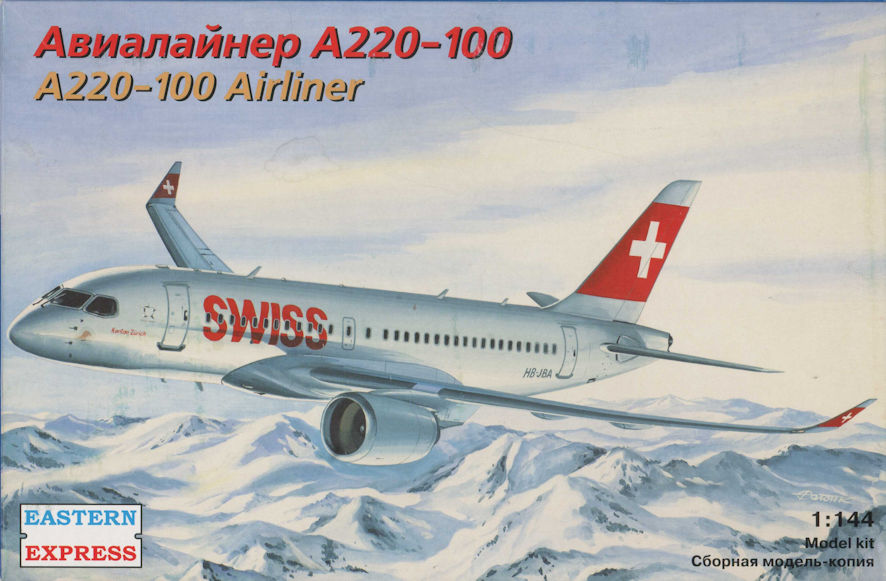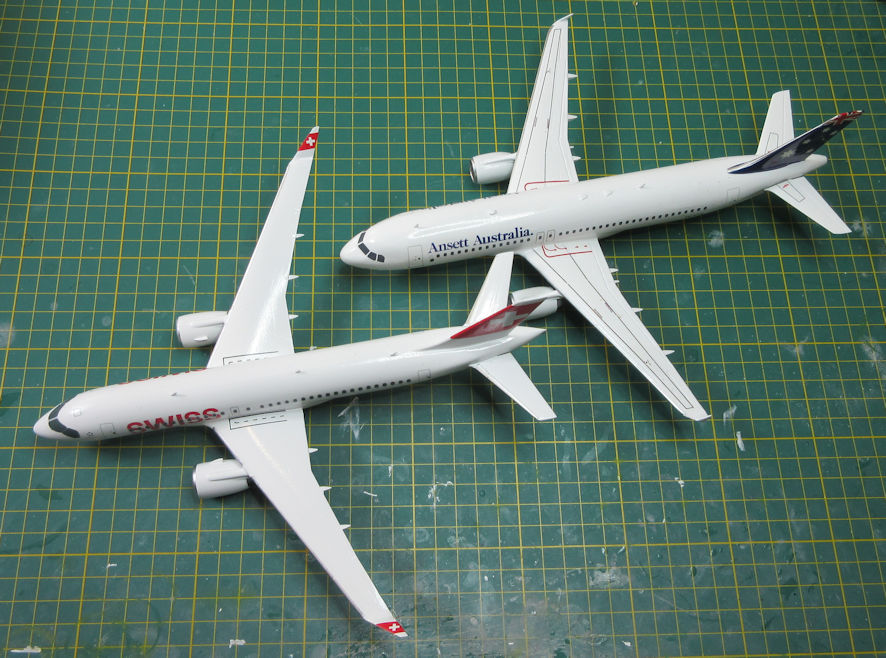I first became aware of the Airbus A.220 while watching sessions of Big Jet TV. Most of you will not be aware of this televisual feast because you don’t think that jet airliners are among the most elegant things that humans ever invented and don’t feel the compulsion to watch them in action for hours on end. That’s your loss. Big Jet TV is very simple in conception and is really armchair plane spotting. This fellow, Jerry, take his video camera to various airport around Europe, and quite often to the United States these days, and live streams airliners landing and taking off from various airports. He puts up with rain, sleet, snow, buffeting winds and every other inconvenience you can think of and, for a very small monthly fee, I get to sit in my warm comfy chair and watch what he sees. It’s not quite the same as being there, you hear something of the rumble that Boeing 747s make as they lumber down the runway headed for destinations half way around the world, but not the air vibrating with the energy of it all. Still, I’m not really keen enough to put up with all the privations of getting to, say, Heathrow, for a few seconds of that kind of not inexpensive thrill. If my modelling productivity has gone down in the past few months it’s all Jerry’s fault.
Among all the Boeing 737s, 747s, 767s, 777s and 787s and the Airbuses and the occasional Embraer, Dash-8 and so on, all painted up in an endless array of airliner liveries, many of them nice retro schemes, the Airbus A.220 stands out for its elegance and the simple red and white scheme that Swiss (now of subsidiary of Lufthansa) fly it in. Jerry and I agree that it is probably the most beautiful airliner in the skies at the moment.
The A.220 didn’t start out with Airbus but with the Canadian company Bombardier. They planned it as a slightly larger version of their Bombardier CRJ which they had taken over from Canadair at some stage. They began planning this larger version back at the end of the 1990s but ran into all kinds of trouble that led to delays and program suspensions so the first of what they called the CS100 did not fly until 2015. Part of Bombardier’s problem was that they were not set up to handle such a large and expensive challenge as the CS series and ran into supply problems and delays in getting their Pratt & Whitney engines, the litany of little problems adding up to a big one that went on. One of the big problems was that the CS series would be competition for the bottom end of both the Boeing and Airbus range of airliners so Boeing complained that the CS would be unfair competition for its Boeing 737-700MAX and lodged formal complaints with its US government which ended up with the threat of a 300 per cent import duty. Airbus was more direct and offered it’s A.319neo (a shorter version of the A.320) as direct competition to the CS series and took away sales that Bombardier would otherwise have got.

The end result of all these problems was that the whole CS project was in danger of collapsing and has, since then, got Bombardier out of the aircraft manufacturing business completely. The government of Quebec kicked in $1 billion to keep the project and Airbus came in to take a part share in the project. As things stand at the moment Airbus owns three quarters of Airbus Canada and the Quebec owns the other quarter.
Parts for the A220 come from all over the place including Northern Ireland, North America and Europe and are assembled at Mirabel in Canada. A new assembly plant will be opened at Mobile in Alabama sometime soon which will, among other things, increase production capability and overcome any possibility of having to pay import duties. At the end of 2019 107 A.220s had been manufactured, there were orders for several hundred more and there may be demand for around 5,000 more over the coming twenty years. Recently Airbus toured the A.220 around Asia and Australia so I wouldn’t be surprised to see them flying in Australian liveries in a few years time – Qantas is apparently interested.
The list price for an A.220 is currently around $81 million but Airbus claim operating costs 15 to 20 per cent lower than their current competition, which is what makes them attractive. What makes them attractive to me is that they look really nice. Which brings us to making a model of one.
According to Scalemates there were no kits made of the Bombardier CS so this Eastern Express kit is the first one of this airliner in any scale. Hannants are currently asking A$70 for a kit of this airliner in 1/144, which is far from cheap and you might be able to find one for a better price from some Eastern European company. On ebay they are being offered for around US$40, which is not much less that Hannants, given the current value of the Pacific Peso. Still, it’s a lot cheaper than having to buy a real 1:1 A.220 and the Eastern Express kit is the only one on the market at the moment, so there is little choice. Eastern Express offer this kit in a variety of different livery options but since I was keen on the Swiss livery that’s the kit I bought.
The box the kit comes in is not large, unlike many Eastern Express boxes which are very large and in which the contents take up very little of the internal volume. In this case, the kit parts rattle around a bit, but not so much as to make one truly annoyed. As for the quality of the kit, I was pleasantly surprised. After the horror of some Eastern Express airliner kits, their Boeing 757 comes to mind, this one is rather nicely done. Far from the quality of your Japanese kit makers or even modern Airfix, but at least something that can be built up into a reasonable replica of the real thing without requiring major work. The parts fit reasonably well and don’t require oceans of filler, they appear fairly accurate and the mouldings are still relatively new and therefore fairly devoid of flash.
The most annoying thing about this kit is the instructions. As is common these days, the parts numbering is only determined by peering at a diagram of the sprues and identifying the parts that way. This is very annoying, particularly when the directions on which parts go where are on the other side of the same sheet of paper – particularly if one has the attention span of a gnat and forgets the number while turning over the sheet of paper. The result of this problem for me is that I made a couple of mistakes during the assembly process which are, fortunately, hidden under the wings so you can’t see them, and a couple of parts left rattling around in the bottom of the box when construction was finished. There was really little more work involved in putting this kit together than there is with most of your Revell and Minicraft airliners, a few dabs of filler to take came of a few smallish gaps and the airframe is taken care of.
The most difficult part of the painting is the engine pods which involved seven different paint colours (not that you’d notice). Apart from the leading edges, which were Tamiya TS-76 with a gloss black base, and the undercarriage, the entire airframe is white. This was, as usual, achieved with a coat or two of Tamiya rattle can white primer sanded with micromesh, three coats of white automotive lacquer, also sanded back with micromesh, one coat of Tamiya rattle can Pure White, another rub over with the finest Micromesh, and then a final coat of Pure White. I’ve painted the undercarriage in Airbus grey, as would be correct for Airbus’s other airliners, but since the A.220 is made in Canada it might be a different shade of grey in reality. Tough.
As an aside, for years I’ve been beating myself up about the correct colour of the wheel hubs on airliners. Fortunately for me Big Jet TV goes regularly to Toulouse where many of the Airbus airliners are made and Jerry is particularly fond of zooming in on undercarriage. As a result I can say with some certainty that when Airbus airlines come out of the factory the wheel hubs are painted the same shade of grey as is used on the rest of the basic airliner. Looking at sessions of Big Jet TV shot elsewhere it seems that when it comes to replacing wheels the maintenance crews don’t care what they put on so you could end up with any other colour they happen to have lying about. This means that when I paint my wheel hubs Airbus grey that means the airliners are fresh out of the factory, which explains why the models don’t have any weathering either. That my story, anyhow. I don’t know if this applies to Boeing airliners too, let’s hope so.
Finally we come to the decals which are, like the rest of the kit, pretty good. As usual, I gave them a coat of Tamiya TS-13 clear which has two purposes. One is in the hope of holding them together while they are being applied and the other is because TS-13 and Tamiya Pure White have the same sheen so there is no need to give the completed model a gloss coat which, I think, makes most airliners look quite unrealistic in comparison to the real thing. The decals went on well but the red bands on the tail were not wide enough to cover the entire tail. Fortunately, the other option on the sheet is for Delta and the shade of red on those decals was exactly the same as for the Swiss decals so a few slivers cut from the Delta decals took care of that little problem.

All in all, a nice little model of a beautiful airliner. It is not quite as good as the real thing, but my back yard if not big enough for one of them and neither is my bank balance, so I can’t complain. The thing I like about working in constant scale is that it allows me to compare various airliners and I was surprised to find that the A.220 is not much smaller than a standard A.320. I guess that what makes the difference is what is on the inside rather than the outside.

Leigh Edmonds
March 2020
